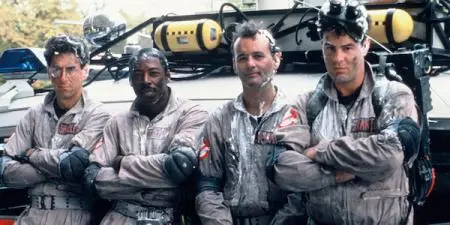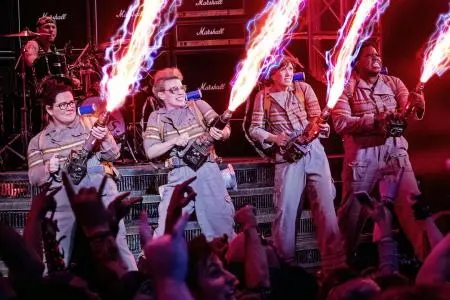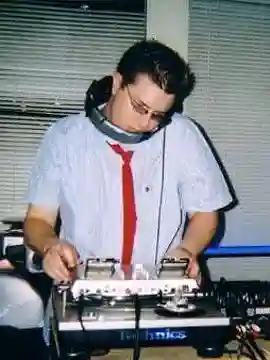I finally went to see the new Ghostbusters movie, and like many fans of the original, I left fairly disappointed. I really wanted to like it—the idea of a new team of Ghostbusters, one filled with some of the funniest women alive, sounded great to me. Just what we needed to make the old franchise shiny and relevant again. Sadly, the film failed to deliver on its considerable promise. It’s not a terrible movie, and actually manages to be a fairly serviceable comedy at times, but its disparate pieces never come together to form a whole quite as compelling as its source material. But why is that? What is that makes Ghostbusters so special?
SPOILERS—obviously.
First and foremost, the original Ghostbusters is a patchwork quilt of genres. It’s not just a comedy, it can also be considered horror and sci-fi. The new version pretty much plays as a straight comedy, like an SNL skit with better special effects. And while the reboot leans more heavily on humor, to the exclusion of almost everything else, it rarely made me laugh as hard. It sticks to a set-up/punchline structure, which makes the movie feel like a series of sketches rather than a cohesive story. Characters often do wacky things simply for the sake of wackiness, without apparent motivation or context. Like Holtzmann’s bizarre dance with butane torches, or Kevin’s out-of-nowhere decision that he was “born to be a Ghostbuster.” The characters have no real reason to be doing these things other than awareness they are on camera and being paid to make the funny, which makes the humor feel that much more forced.
The original is not simply a vehicle for jokes. It is more character-driven, finding humor in the interaction between its protagonists, as well as their reactions to ridiculous situations. There aren’t many scenes played solely for a gag—instead the film derives laughs from moments like Peter making fun of serious people, Ray’s childlike enthusiasm, Egon giving an overly detailed answer to a simple question, or their struggle to be taken seriously by a world that considers them frauds. The first film builds a story in which funny moments can occur organically, while the reboot stuffs every second of screentime with as many jokes as it can. They’re not all bad jokes, but without being rooted in an interesting story populated with characters the audience can care about and invest in, it's just an hour and a half of slapstick and quips. The scene that comes the closest to mimicking the original is when the ladies are about to go on their first bust and Abby and Erin both try to deliver a badass “Let’s go,” only to end up apologizing for stepping on each other’s moment. In that scene they are not just comedians waiting for a punchline, but two old friends awkwardly navigating their new working relationship. It’s a very genuine interaction that feels like a totally unscripted moment between two characters, unlike Abby’s tirades about soup or Patty’s tedious recitation of WikiFacts. The original Ghostbusters are not the deepest or most complex characters, but they feel like real people trying to make their way in a crazy world.

Part of the reason the humor lands so well in 1984’s Ghostbusters is because the moments of levity are juxtaposed with scenes of existential horror. It’s significantly less terrifying than when I was ten, but the scene with the dead librarian still gives me a chill on subsequent viewings. While the new movie pays homage to the iconic scene, the latest version is neither scary nor funny. Part of this is due to the effects design, since the ghosts are all rendered like crisp, glowing NPCs out of the latest-gen video game—they look digital and artificial rather than otherworldly. The ghosts of the original are either completely abstract monsters, or disheveled skeletal people, like the debris left of a human soul. The original scene ends with the librarian puffing up and roaring like a threatened animal, which sends the guys running away screaming. Very scary. The new scene ends with the ghost covering Erin in slime, and then later cuts to the ladies making jokes about projectile vomit in inappropriate places. Not scary. In fact, for the duration of the reboot, Patty is the only member of the team who ever shows any fear of ghosts, but it is always played for laughs, which gives the impression that she’s never in any real danger and her panic is just a silly overreaction. Even though the ghosts never kill anyone in the original, they still provoke a sense of dread. In the reboot, everything is a joke and nothing is frightening—even the villain’s suicide barely raised my eyebrow.
But the old Ghostbusters is not just another special effects laden horror comedy—it’s also a tightly written work of science fiction. They investigate the supernatural, but they do so with the tools and methods of science. Ghosts are still governed by natural laws, and by studying a sample of ectoplasm from the library, Egon is able to design a device (the proton pack) that can manipulate those laws to achieve a desired effect. That’s how science works in the real world, which helps make the paranormal elements more believable. The rules of this universe may be arbitrary and made up, but they are consistently obeyed and can only be broken with a solid in-story reason. This keeps the Ghostbusters grounded—they are not superheroes that can do the impossible without effort, just four exterminators who know the tools of their trade well enough to pull off a few tricks. The team’s most dire moment comes when they are confronted by the giant Stay Puft Marshmallow Man and Egon admits he is “terrified beyond all capacity for rational thought.” They may have nuclear accelerators strapped to their backs, but the Ghostbuster’s most powerful weapon is reason. The conflicts of this story are not resolved by superpowers, bigger weapons or plot devices; the characters have to think about the problem and then use applied knowledge to overcome it.

To my chagrin, the sci-fi elements are barely present in the latest installment, and are really only used as set decoration. The new team uses considerably more brawn than brains; their problems are not solved with careful consideration, but by shooting more, pulling insane stunts, and blowing stuff up. Although Holtzmann rattles off the technical specs of the proton packs with erotic enthusiasm, she never explains how or why they work, or where she got the idea. She keeps cobbling together new devices, but other than the proton pistols, there is no discernible reason for any of them to exist other than to sell toys. Again, for one scene it comes close to its source material, when Abby notices the similarities between the villain’s technology and their own. This could have fed an interesting subplot about the ethical dilemmas of creating powerful new technologies that can be used for good or evil. Sadly, this is just another thread left to dangle. A lot of terminology gets bandied about, but never connected to anything concrete—the movie never tells us the rules, and so the world it is building never quite feels real. For example, the first ghost they capture in the classic style—they use the proton beams to wrangle the thing into a trap device. That device is not seen or referenced again, as after that point their proton packs become glorified laser guns that vaporize ghosts on contact. There is no consistency, and without any established rules for this universe it is hard for the characters’ actions to have any weight beyond whether or not they are making us laugh.
Case in point: the endings. When the original Ghostbusters face down the powerful Gozer the Gozerian, Egon comes up with a crazy but theoretically sound idea for sending the angry god back through the portal from whence she came: they cross proton streams. This fills the viewer with anticipation, because it has been established in the beginning of the film that crossing the streams could be catastrophically bad on an atomic level. Egon explains in detail why that very bad thing might be just what they need to end this spectral invasion, and by the time he finishes the audience is just as anxious to find out what will happen as the characters. The result is a suitably epic explosion of special effects, punctuated with a moment of visual comedy to relieve the tension.
The new Ghostbusters also defeat their nemesis by reversing an otherworldly portal, which they achieve with a nuclear explosion. This is not accomplished by drawing on any well-established ideas. Instead, maybe five minutes previous, when the rest of the team is about to open fire on a ghost hijacking their car, Holtzmann stops them because all of the equipment on top of the vehicle is “basically a nuke.” This is completely unprecedented information, as that equipment has not been mentioned or used in any way during the movie. It also doesn’t inspire excited anticipation from the viewer, but rather a sigh of resignation, as we all know the characters will inevitably have to shoot the car to blow it up before they even consider the possibility themselves. We are also well aware of what happens when a nuke goes off, since nuclear explosions have become practically cliche in science fiction. So even as the team formulates their plan, there is no wondering what will happen next, and no sense of relief when it actually works. Without any established rules, their can be no thrill in breaking them.
The two versions of Ghostbusters are ultimately very different films. One is a unique blend of genres, and the other is simply a comedy with special effects. The first tells a story that has humor in it, while the latter uses the story as a frame to hang jokes on. While the latest installment is a fun romp with four very talented comedians, it does little to serve or add to the franchise and never really justifies its use of such a classic title. There’s no real reason it needed to be a Ghostbusters film, and it only suffers in comparison to its predecessors. Hopefully the inevitable sequel will try harder to recapture some of the magic that inspired the reboot in the first place.

About the author
BH Shepherd is a writer and a DJ from Texas. He graduated from Skidmore College in 2005 with degrees in English and Demonology after writing a thesis about Doctor Doom. A hardcore sci-fi geek, noir junkie and comic book prophet, BH Shepherd has spent a lot of time studying things that don’t exist. He currently resides in Austin, where he is working on The Greatest Novel Ever.







